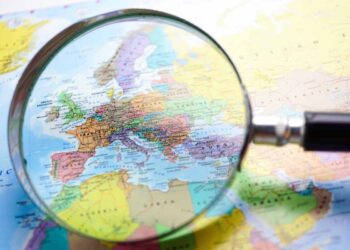According to the European Commission, an estimated 100 billion plastic carrier bags are used in the European Union every year – an average of almost 200 bags per capita. Around 90 percent of these are lightweight bags (thinner than 0.05 millimeters), and most are used only once before being thrown away.
An iconic symbol of our linear, throwaway economy, single-use plastic bags are a major source of environmental pollution, especially in marine environments where animals are often injured or killed after becoming entangled or ingesting plastic bags mistaken for food. Although their exact contribution to marine litter is uncertain, there is evidence to show that the problem is getting worse, rather than better. The U.K.-based Marine Conservation Society recently reported the number of single-use plastic bags littered along British beaches alone increased 27 percent from 2014 to 2015.
Taking a Directive approach
In an attempt to mitigate this issue, in May 2015 the European Parliament and Council adopted Directive 2015/720/EU, amending Article 4 (prevention) of the Packaging and Packaging Waste Directive (Directive 94/62/EC). Passed after years of political debate and delays, the new legislation requires member states to implement measures to reduce the consumption of lightweight plastic carrier bags. The Directive allows two possibilities for member states to transpose the amendments into their national laws.
One option for EU countries is to take measures that ensure plastic bag consumption is reduced to a maximum of 90 bags per capita per year by the end of 2019, and not more than 40 per capita by 2025. How member states decide to achieve these reductions is up to them. For example, they may use nationwide bans, taxes, marketing restrictions or other policies.
Alternatively, member states can adopt measures that ensure that by the end of 2018, no such bags are provided free at the point of sale, unless “equally effective tools are applied.”
It is worth noting that this progressive movement out of Europe sits in stark contrast to the situation in the U.S., where just last month the Michigan Senate approved a bill that, if passed by the House and signed into law, will prohibit local governments from regulating plastic bag usage.
Nations acting fast
While the deadline to transpose the EU directive into national law is Nov. 27, 2016, several governments have already taken measures to tackle the burden of single-use plastic bags. One of the most well known examples is Ireland, which introduced a nationwide bag fee in 2002. Initially set at 15 euro cents per bag (increasing to 22 euro cents in 2007), the fee had an immediate effect on consumer behavior, reducing plastic bag consumption by an estimated 98 percent within a week.
Significant drops in plastic bag usage have also occurred in Scotland and Northern Ireland, which introduced plastic bag fees in 2014 and 2013, respectively. According to the BBC, within one year of implementing the charge, Scotland saw its plastic bag use decrease by 18 percent. Northern Ireland saw a consumption decrease of 71 percent the first year the policy was in place and 43 percent the next.
Other European countries that have already adopted measures to reduce their use of plastic bags include Wales (fee on plastic bags since 2011), Denmark (fee on plastic bags since 2003), Italy (ban on non-biodegradable plastic bags since 2011), Spain (fee on plastic bags since 2011), and Bulgaria (fee on plastic bags since 2011).
France is the next to implement action. Starting July 1, non-reusable plastic carrier bags will be banned from checkouts, and those used for fruit and vegetable will be banned starting January 1, 2017. However, plastic carrier and produce bags will be permitted if they are biodegradable.
Another member state that has adopted new regulations as a result of these legislative changes is England. Since October of last year, shoppers have been charged 5 pence for every plastic bag they used at large stores (those with 250 or more full-time employees). Six months after the introduction of the policy, bag usage is reported to have dropped by around 80 percent. Over the next decade, the fee is expected to reduce litter cleanup costs by 60 million pounds.
Other materials on the horizon?
It was a long fight, but in Europe the days are numbered for plastic bags (at least those given away for free).
In the year since the adoption of the Directive, some member states have already achieved impressive results in terms of decreasing their plastic bag consumption. Given such success, one can only hope that other similar initiatives to reduce use of hard-to-recycle materials will find their way into future EU policy.
Clarissa Morawski is based in Barcelona and serves as the managing director of the Reloop Platform, which brings together industry, government, and non-governmental organizations in Europe to form a network for advances in policy that create enabling system conditions for circularity across the European economy. Clarissa is also principal of Canada-based CM Consulting Inc.


























